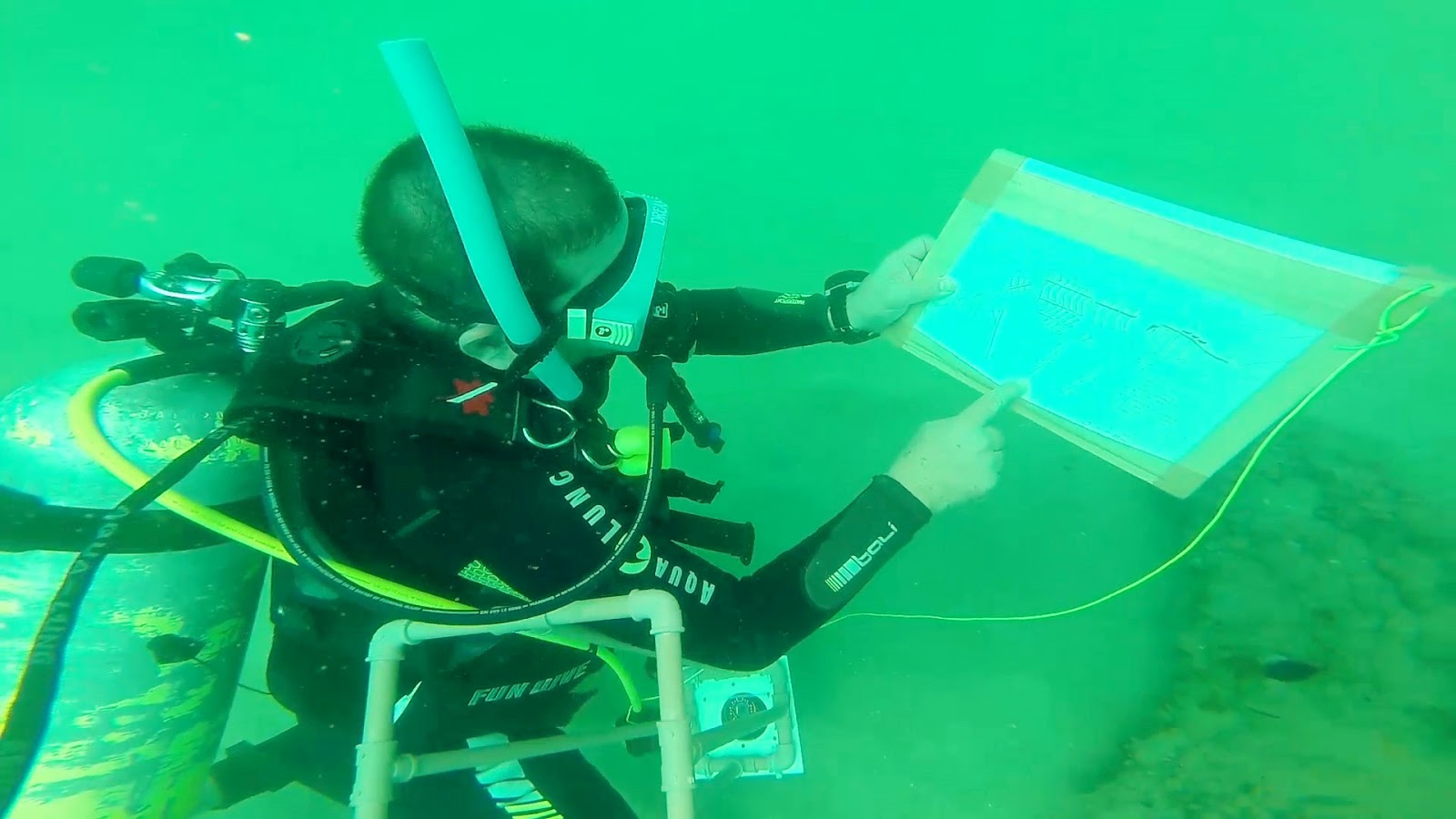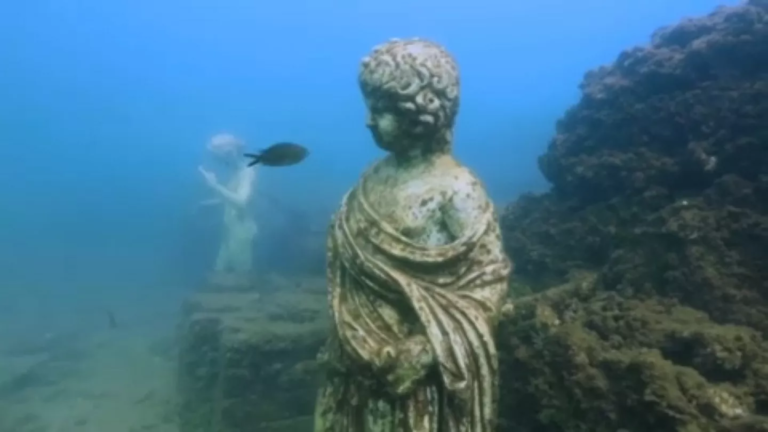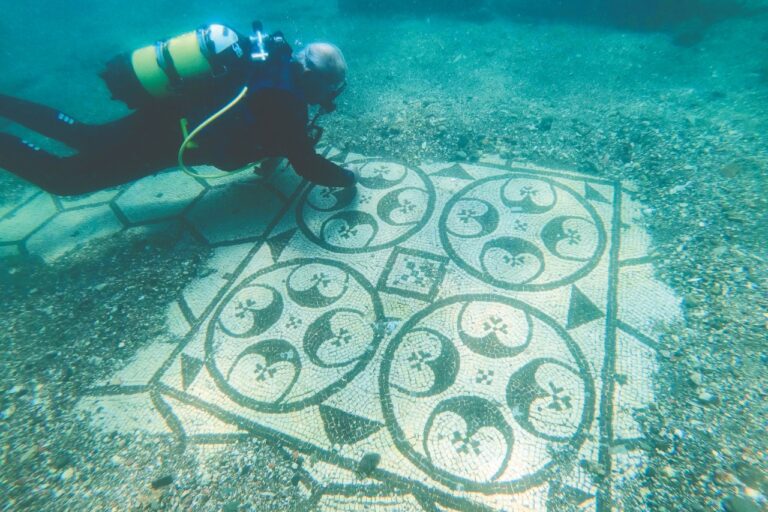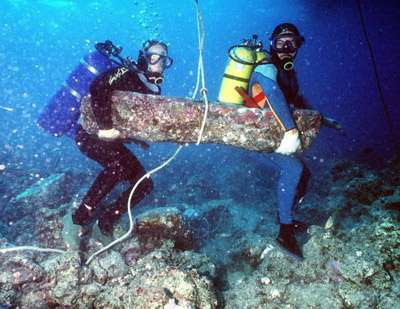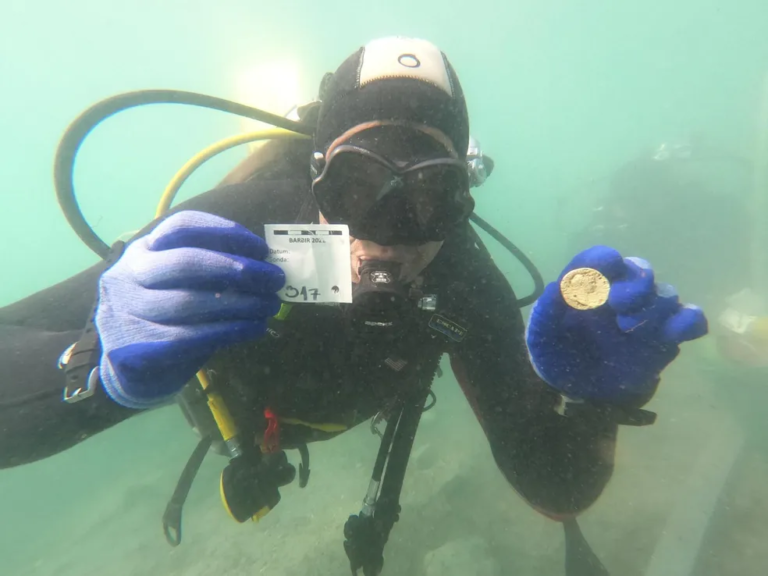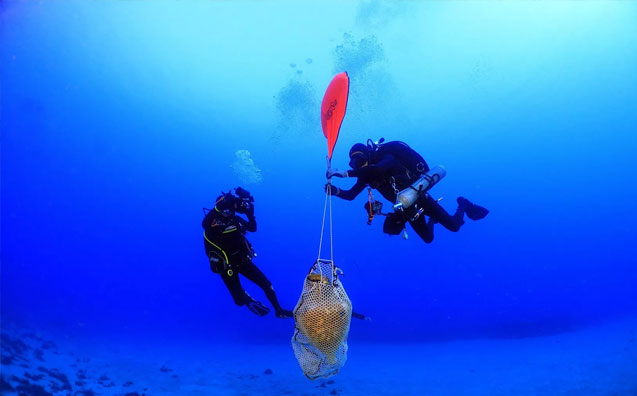Recreational Diving and Archaeology: Mapping the Submerged Past
Recreational diving and archaeology have come together to explore and uncover the mysteries of the submerged past. As divers venture into the underwater world, they have the opportunity to map and discover hidden archaeological sites that have been lost beneath the waves for centuries. Mapping these submerged sites is crucial as it provides valuable insights into our history and cultural heritage.
Understanding the importance of mapping the submerged past is essential to appreciate the significance of recreational diving in archaeology. By mapping these underwater sites, divers can contribute to uncovering artifacts, structures, and even whole ancient cities that have been swallowed by the sea. Through meticulous documentation using advanced mapping techniques, divers can help archaeologists piece together the puzzle of human history.
Recreational divers play a significant role in archaeological discoveries underwater. Their passion for exploring the depths, coupled with their understanding of marine environments, allows them to venture where traditional archaeological techniques fall short. By recording their findings and mapping submerged sites, divers can contribute to the advancement of our knowledge and understanding of our past.
Moreover, recreational divers have the advantage of being able to access areas that are often difficult to reach by other means. They can explore underwater caves and reefs, where artifacts and structures from ancient civilizations may lie undisturbed. Their observations can be vital for identifying potential archaeological sites and guiding professional archaeologists in conducting further investigations.
In conclusion, recreational diving and archaeology intersect in the pursuit of mapping the submerged past. Through their explorations, divers can make significant contributions to archaeological discoveries underwater. By mapping these submerged sites, they allow us to better understand our history and culture. The collaboration between recreational divers and archaeologists holds immense potential for discovering and preserving submerged cultural treasures.
Table of Contents
The Intersection of Recreation and Archaeology
Recreational diving and archaeology have a fascinating intersection that has led to numerous discoveries and advancements in mapping the submerged past. The history and evolution of recreational diving play a crucial role in understanding the significance of involving divers in archaeological mapping.
Recreational diving was initially driven by curiosity and the desire to explore the underwater world. However, over time, divers began stumbling upon unexpected archaeological sites. These chance encounters sparked a realization of the potential for recreational divers to contribute to the field of archaeology. The enthusiasm and skillset of recreational divers proved invaluable in uncovering submerged historical treasures.
Involving recreational divers in archaeological mapping has several benefits. Their extensive knowledge of underwater environments, combined with their ability to navigate and document discoveries, provide a unique perspective. Recreational divers have the opportunity to explore areas that might not otherwise be accessible to archaeologists. This collaboration allows for a greater understanding of the submerged past and ensures its preservation for future generations.
However, involving recreational divers in archaeological mapping also presents challenges. One of the main obstacles is ensuring the accuracy of data collection and documentation. Proper training and guidelines are crucial to ensure responsible diving practices and accurate mapping techniques. It is essential to strike a balance between the recreational nature of diving and the scientific requirements of archaeological mapping.
Despite these challenges, the collaboration between recreational divers and archaeologists has yielded significant discoveries. For example, the wreck of the RMS Titanic was initially located by recreational divers. These successful mapping projects not only contribute to our understanding of history but also highlight the importance of involving the public in preserving submerged cultural heritage.
The intersection of recreation and archaeology in mapping the submerged past offers a unique opportunity for collaboration and knowledge sharing. Recreational divers bring their passion and expertise to the table, while archaeologists provide the necessary background and scientific approach. Advancements in technology, such as underwater photography, videography, and photogrammetry, further enhance the mapping efforts.
In conclusion, the involvement of recreational divers in archaeological mapping is an exciting frontier that bridges the gap between exploration and preservation of the submerged past. The history and evolution of recreational diving have created a dedicated community of divers with the potential to make valuable contributions to the field of archaeology. By harnessing their skills and enthusiasm, we can ensure the protection and preservation of underwater archaeological sites for generations to come.
Mapping Techniques in Recreational Diving
Recreational diving has evolved over the years to become not only a popular hobby but also a valuable tool for archaeological exploration. Recreational divers have developed various mapping techniques to document and study submerged archaeological sites.
One of these techniques is underwater photography, which allows divers to capture detailed images of underwater structures and artifacts. By carefully photographing these sites, divers can create a visual record that can be used for analysis and mapping purposes. Underwater videography is another technique that has gained popularity, as it enables divers to capture moving images of the underwater environment, providing a more comprehensive view of the site.
However, one of the most effective mapping techniques in recreational diving is photogrammetry. This process involves taking a series of overlapping photographs of an object or site and using specialized software to create a 3D model. Photogrammetry allows for the accurate measurement and mapping of submerged archaeological features, helping to preserve and study submerged cultural heritage.
Accurate mapping is crucial for preserving these submerged cultural treasures. It provides archaeologists with a detailed and comprehensive understanding of the site, aiding in the identification, classification, and interpretation of artifacts. Moreover, it helps ensure the preservation of these sites, as it allows for the monitoring and assessment of changes over time.
By employing various mapping techniques such as underwater photography, videography, and photogrammetry, recreational divers play a fundamental role in the documentation and mapping of submerged archaeological sites. Their contributions have not only resulted in significant discoveries but have also fostered a greater understanding of our submerged past. Through their efforts, the importance of preserving and protecting these sites becomes evident, emphasizing the need for continued collaboration between divers and archaeologists in order to safeguard these submerged cultural treasures.
Case Studies of Successful Mapping Projects
In recent years, there have been several notable examples of successful underwater archaeological mapping projects, showcasing the crucial role that recreational divers play in these discoveries. One such project was the mapping of the ancient city of Baiae, located off the coast of Italy. Recreational divers, armed with underwater photography and videography equipment, documented the submerged remains of this once prosperous Roman city. Through their meticulous mapping efforts, they were able to provide valuable insight into the layout and architecture of the city, which significantly contributed to our understanding of its history.
Another remarkable case is the 3D mapping of the Antikythera Shipwreck, an ancient Greek vessel that sank over 2,000 years ago. Recreational divers, in collaboration with archaeologists, used advanced photogrammetry techniques to create highly detailed 3D models of the wreck. These models not only allowed for a virtual exploration of the site but also provided valuable information about ancient shipbuilding techniques and the cargo the vessel was carrying.
Furthermore, the discovery of the underwater archaeological site known as “The Underwater Pompeii” highlights the significance of recreational divers in mapping submerged cultural heritage. Located in the Gulf of Ercolano in Italy, this site contains well-preserved ruins of ancient Roman villas and other structures. Recreational divers have played a crucial role in mapping and documenting this site, enabling archaeologists to gain a greater understanding of Roman society and culture during this time.
These case studies demonstrate the immense value that recreational divers bring to underwater archaeological mapping projects. Their passion for diving combined with their dedication to documenting and preserving submerged cultural heritage has resulted in groundbreaking discoveries. Not only do these discoveries provide us with a glimpse into the past, enhancing our understanding of history, but they also serve as a reminder of the importance of protecting and preserving these sites for future generations.
In conclusion, these case studies clearly illustrate how recreational divers have made significant contributions to mapping the submerged past through their involvement in underwater archaeological projects. Their mapping efforts and documentation have shed light on ancient civilizations, their architectural achievements, and cultural practices. These findings have not only deepened our understanding of history but also emphasized the importance of responsible diving practices and site preservation. Moving forward, continued collaboration between recreational divers and archaeologists, along with advancements in technology, hold promising prospects for further exploration and preservation of submerged cultural treasures.
Challenges and Ethical Considerations
As exciting as recreational diving and archaeology can be, there are several challenges and ethical considerations that arise when involving recreational divers in archaeological mapping.
Challenges Faced in Involving Recreational Divers in Archaeological Mapping
One of the main challenges is ensuring that recreational divers have the necessary knowledge and skills to effectively contribute to archaeological mapping. While many recreational divers are passionate about exploring underwater sites, they may not have the same level of expertise as professional archaeologists. Proper training and education are essential to ensure that divers understand the importance of accurate mapping and adhere to responsible diving practices.
In addition, there is the challenge of coordinating and organizing large groups of recreational divers for mapping projects. Unlike professional archaeological teams with established hierarchies and protocols, recreational divers may have varying levels of experience and different diving styles. This can pose logistical challenges and require effective communication and coordination between divers and archaeologists.
Ethical Considerations in Recreational Diving and Archaeology
Ethical considerations also come into play when involving recreational divers in archaeological mapping. One common concern is artifact removal. While recreational divers may come across valuable artifacts during their explorations, it is important that they understand the significance of leaving artifacts in their original context. The removal of artifacts can disrupt the archaeological record and hinder our understanding of the past. Proper guidelines should be established to ensure that artifacts are left untouched and preserved for future study.
Site preservation is another ethical consideration. Recreational divers must be made aware of the fragility of underwater archaeological sites and the potential damage that can be caused by human activity. Guidelines should be in place to prevent divers from damaging the sites and to promote sustainable tourism that respects and preserves the underwater cultural heritage.
The Need for Proper Training and Guidelines
To address these challenges and ethical considerations, it is crucial to provide proper training and guidelines for recreational divers participating in archaeological mapping projects. This training should cover topics such as accurate mapping techniques, responsible underwater behavior, site preservation, and ethical considerations. By equipping divers with the necessary knowledge and skills, we can ensure that they make valuable contributions to the study and preservation of submerged cultural heritage without causing harm.
Overall, while there are challenges and ethical considerations involved in involving recreational divers in archaeological mapping, these can be overcome through proper training and guidelines. With the collaboration and cooperation of divers and archaeologists, we can continue to uncover and protect the submerged past, ultimately contributing to a greater understanding of our history and cultural heritage.
Future Prospects and Collaboration
The future prospects for collaborations between recreational divers and archaeologists are promising. As technology continues to advance, divers are equipped with more sophisticated tools to aid in underwater mapping efforts. These advancements in equipment, such as underwater drones and remote sensing technology, enable divers to explore and map submerged archaeological sites with greater accuracy and efficiency.
With the help of these technological advancements, recreational divers can work hand-in-hand with archaeologists to uncover hidden treasures and unravel the mysteries of the past. By sharing their findings, divers can contribute to the overall understanding of history and the preservation of submerged cultural heritage.
In addition to technological advancements, increased public awareness and participation play a vital role in preserving submerged cultural treasures. As more people become aware of the importance of maintaining and protecting these archaeological sites, there is greater support for conservation efforts and responsible diving practices.
Public participation can take many forms, and recreational divers have the opportunity to actively contribute. They can assist in surveying and mapping underwater sites, helping archaeologists gather valuable data. By involving the public in these endeavors, a wider range of perspectives and expertise can be brought to the field, enriching the study of submerged cultural heritage.
Furthermore, collaboration between recreational divers and archaeologists not only benefits the scientific community but also enhances the diving experience for enthusiasts. Divers have the opportunity to delve into the history of the sites they explore, further enriching their understanding and appreciation of the underwater world.
In conclusion, the future prospects for collaborations between recreational divers and archaeologists are bright. Technological advancements and increased public awareness create favorable conditions for further exploration and preservation of submerged cultural treasures. By working together, divers and archaeologists can continue to map the submerged past, uncovering valuable artifacts and expanding our knowledge of history while promoting responsible and sustainable practices in recreational diving.
Conclusion
In conclusion, the intersection of recreational diving and archaeology holds tremendous potential for mapping the submerged past. By involving recreational divers in archaeological mapping efforts, we can harness their passion and expertise to make remarkable discoveries underwater.
Recreational divers play a crucial role in uncovering archaeological sites that may have otherwise gone unnoticed. Their extensive knowledge of dive sites, coupled with their enthusiasm, often leads to accidental finds of great historical significance. By actively involving them in mapping projects, we can tap into this invaluable resource and expand our understanding of submerged cultural heritage.
Mapping techniques used by recreational divers, such as underwater photography, videography, and photogrammetry, are essential for accurately documenting and preserving these underwater sites. By creating detailed maps, we ensure that the delicate remains of the past are not only discovered but also protected for future generations.
Several successful case studies demonstrate the immense value of collaboration between recreational divers and archaeologists. These partnerships have resulted in significant findings that have provided new insights into history. The contributions made by enthusiastic divers cannot be underestimated, as their passion drives them to explore uncharted waters and contribute to the collective understanding of our past.
However, there are challenges that must be addressed when involving recreational divers in archaeological mapping. Proper training and guidelines are necessary to ensure responsible diving practices and the preservation of underwater sites. Ethical considerations regarding artifact removal, site preservation, and sustainable tourism must also be carefully addressed to protect the integrity of these historical treasures.
Looking ahead, future collaborations between recreational divers and archaeologists hold great promise. Advancements in technology continue to enhance mapping efforts, making it easier and more efficient to document and study submerged archaeological sites. Increased public awareness and participation in preserving these treasures can not only aid in their protection but also foster a deeper appreciation for our shared history.
In conclusion, recreational diving is an invaluable tool in mapping the submerged past. It is through continued research and collaboration between divers and archaeologists that we can unlock the secrets hidden beneath the waves. By reinforcing the importance of protecting and preserving underwater archaeological sites, we ensure that future generations can continue to explore and learn from these remarkable remnants of our past.

